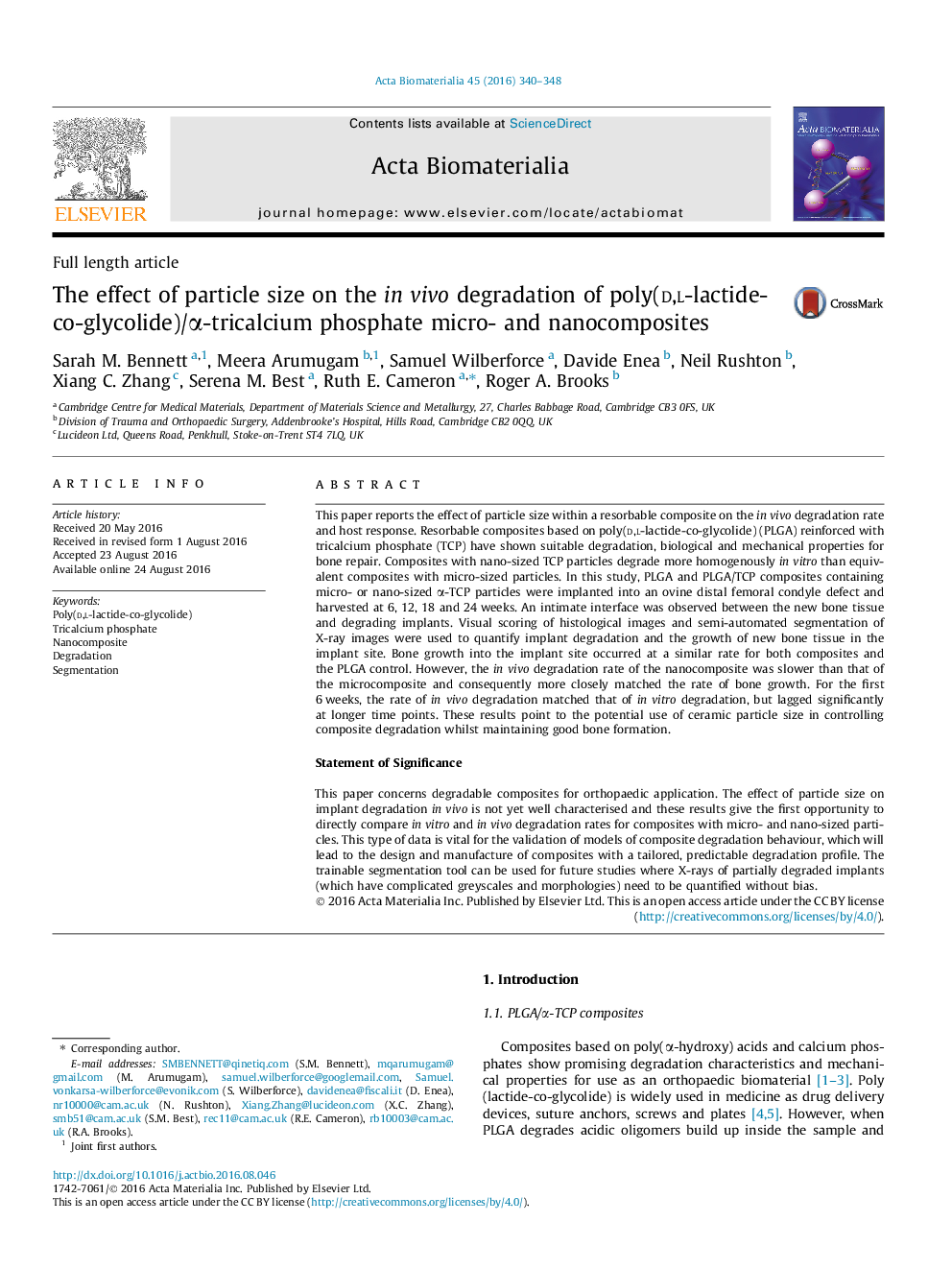| کد مقاله | کد نشریه | سال انتشار | مقاله انگلیسی | نسخه تمام متن |
|---|---|---|---|---|
| 6450324 | 1415941 | 2016 | 9 صفحه PDF | دانلود رایگان |

This paper reports the effect of particle size within a resorbable composite on the in vivo degradation rate and host response. Resorbable composites based on poly(d,l-lactide-co-glycolide) (PLGA) reinforced with tricalcium phosphate (TCP) have shown suitable degradation, biological and mechanical properties for bone repair. Composites with nano-sized TCP particles degrade more homogenously in vitro than equivalent composites with micro-sized particles. In this study, PLGA and PLGA/TCP composites containing micro- or nano-sized α-TCP particles were implanted into an ovine distal femoral condyle defect and harvested at 6, 12, 18 and 24 weeks. An intimate interface was observed between the new bone tissue and degrading implants. Visual scoring of histological images and semi-automated segmentation of X-ray images were used to quantify implant degradation and the growth of new bone tissue in the implant site. Bone growth into the implant site occurred at a similar rate for both composites and the PLGA control. However, the in vivo degradation rate of the nanocomposite was slower than that of the microcomposite and consequently more closely matched the rate of bone growth. For the first 6 weeks, the rate of in vivo degradation matched that of in vitro degradation, but lagged significantly at longer time points. These results point to the potential use of ceramic particle size in controlling composite degradation whilst maintaining good bone formation.Statement of SignificanceThis paper concerns degradable composites for orthopaedic application. The effect of particle size on implant degradation in vivo is not yet well characterised and these results give the first opportunity to directly compare in vitro and in vivo degradation rates for composites with micro- and nano-sized particles. This type of data is vital for the validation of models of composite degradation behaviour, which will lead to the design and manufacture of composites with a tailored, predictable degradation profile. The trainable segmentation tool can be used for future studies where X-rays of partially degraded implants (which have complicated greyscales and morphologies) need to be quantified without bias.
216
Journal: Acta Biomaterialia - Volume 45, November 2016, Pages 340-348